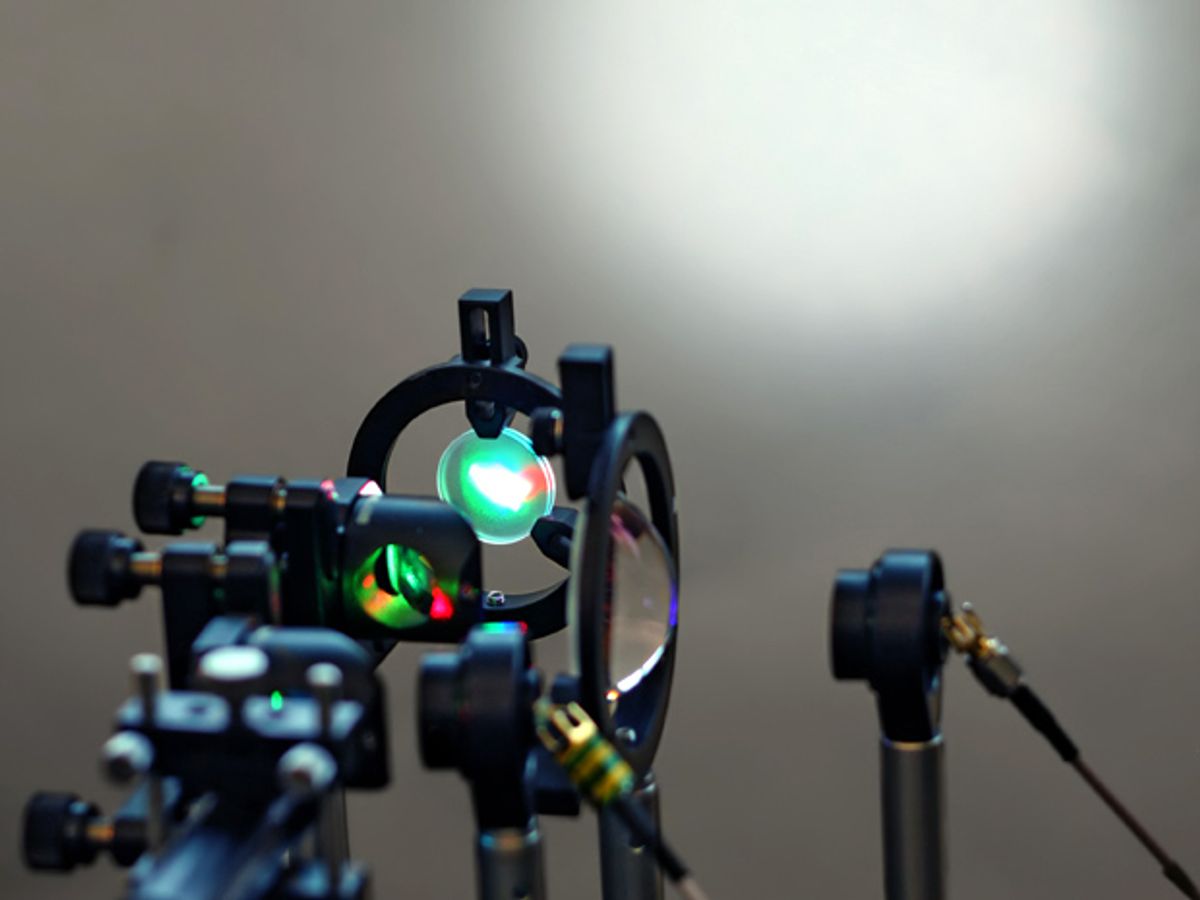Struggling with spotty Wi-Fi? Li-Fi might be the answer. The technology uses LED-based room lighting instead of radio waves to transmit data. But one of the leading Li-Fi proponents is already looking beyond LEDs to laser-based lighting, which he says could bring a tenfold increase in data rates.
“The problem is that LEDs, although they are more energy efficient than incandescent light, they still can be improved in terms of their light output,” says Harald Haas, chair of mobile communications at the University of Edinburgh and a member of the Ultra-Parallel Visible Light Communications Project. “We strongly believe the next wave of energy efficient lighting will be based on laser diodes.”
Li-Fi encodes data on the light coming from LEDs by modulating their output. The rapid flickering is unnoticeable to the human eye, but a receiver on a desktop computer or mobile device can read the signal, and even send one back to a transceiver on the ceiling of a room, providing two-way communication. But many LEDs use a phosphor coating to convert blue light to white, and that limits how fast the devices can be modulated, holding down data rates.
In research published in Optics Express, Haas and his team showed that replacing the LEDs with off-the-shelf laser diodes vastly improved the situation. Lasers, with their high energy and optical efficiency, can be modulated at 10 times the rate of LEDs. And rather than using phosphors, laser lighting would create white light by mixing the output of several lasers operating at different wavelengths. That means each wavelength can be used as a separate data channel, the same sort of wavelength division multiplexing that lets optical telecommunications carry so much data. The Edinburgh group’s experiment used nine laser diodes.
While LED-based Li-Fi could reach data rates of 10 Gb/s, an improvement over the 7 Gb/s maximum of Wi-Fi, using lasers could boost that speed to “easily beyond 100 Gb/s,” Haas says.
At the moment, such a setup is expensive, but Haas believes mass production will bring down the cost of the lasers and move them into lighting applications. BMW already sells laser-based headlights on its i8 model. “That is only the start of a technology move as laser diodes get more inexpensive,” Haas says.
Neil Savage is a freelance science and technology writer based in Lowell, Mass., and a frequent contributor to IEEE Spectrum. His topics of interest include photonics, physics, computing, materials science, and semiconductors. His most recent article, “Tiny Satellites Could Distribute Quantum Keys,” describes an experiment in which cryptographic keys were distributed from satellites released from the International Space Station. He serves on the steering committee of New England Science Writers.



